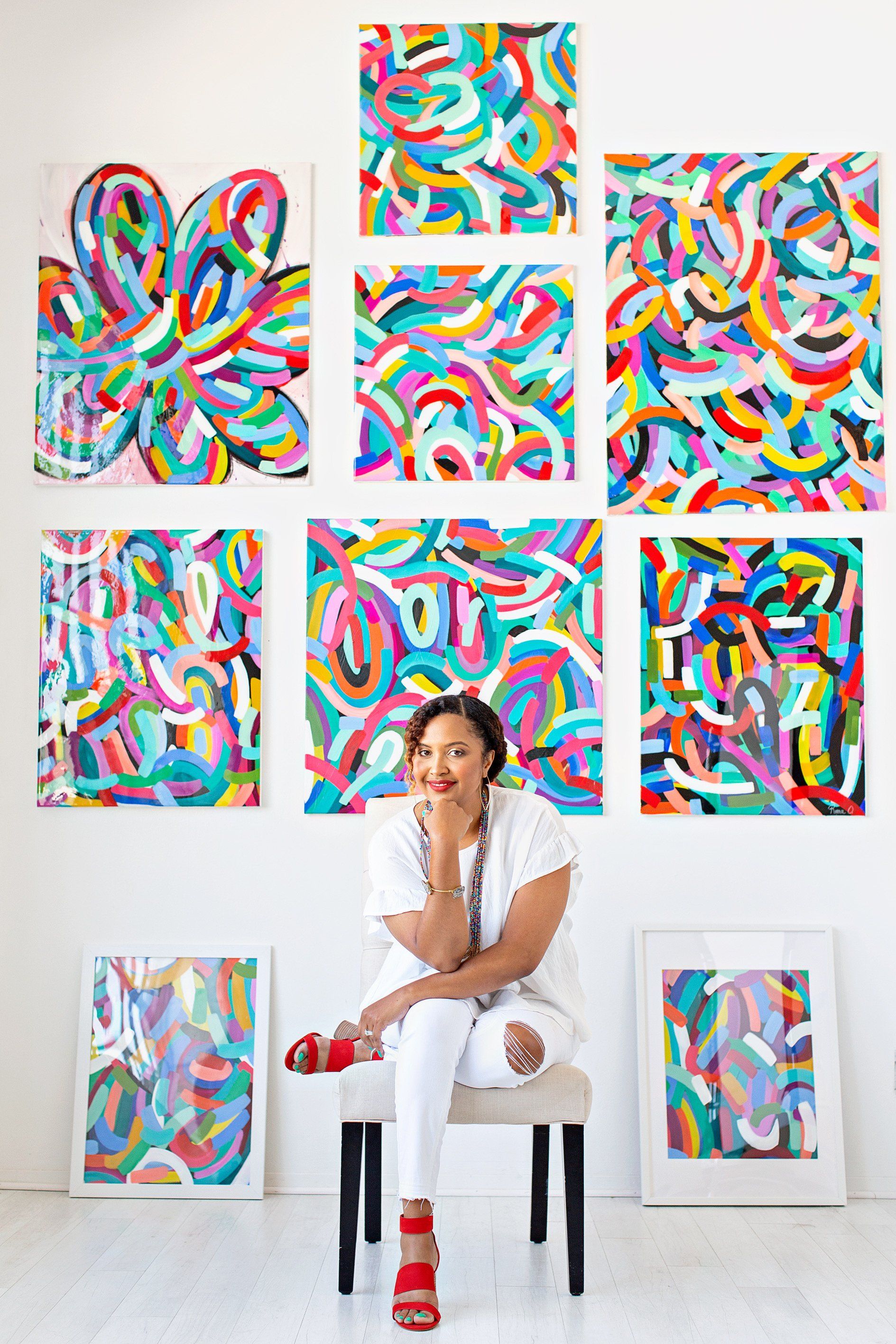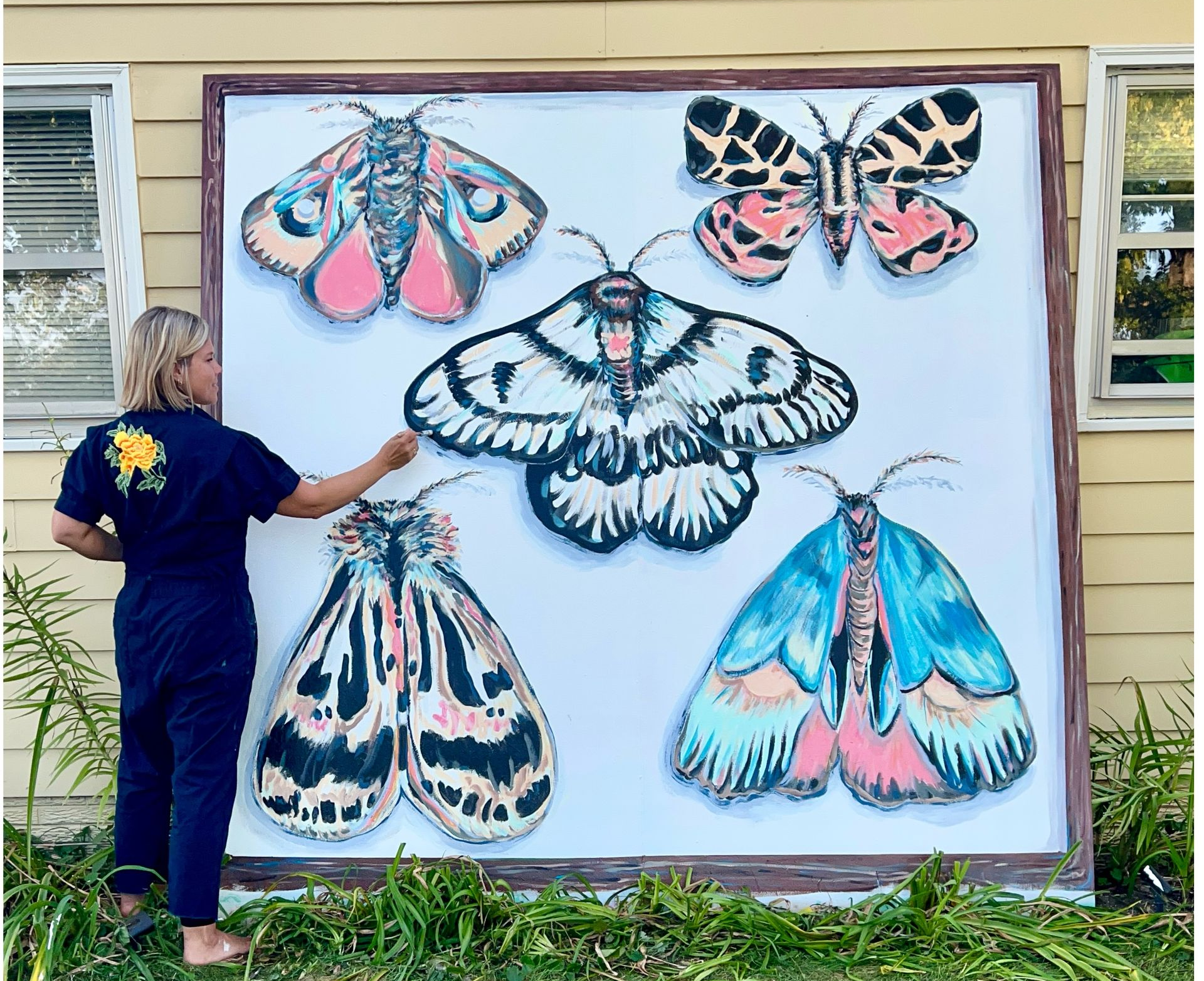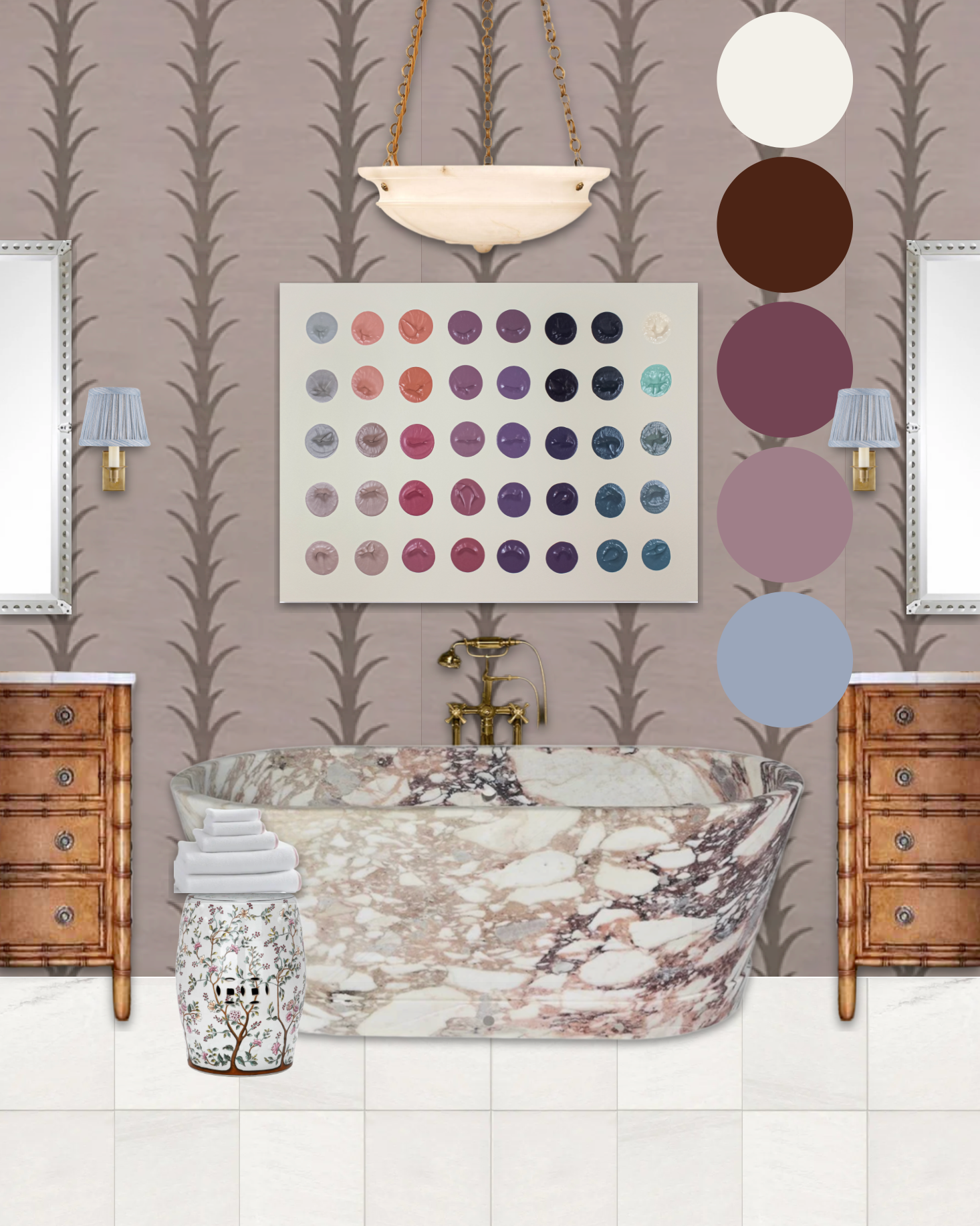Ten Minute Masterpiece: At Segregated Drinking Fountain
At Segregated Drinking Fountain
Photographed in 1956 by Gordon Parks (1912-2006)
The Gordon Parks Foundation
In this episode, we take a look at our first photograph on the podcast – Gordon Parks’ image from 1956 entitled At Segregated Drinking Fountain.
In the summer of 1956, Life Magazine sent Gordon Parks to Alabama to document Black Americans living under Jim Crow laws in the South. Twenty-six of his images from this assignment appeared in the September 24th, 1956 issue of Life Magazine in a photo essay called “The Restraints – Open and Hidden”.
The photographs of Gordon Parks have an enduring power. Through quiet moments of dignity, he documented people who refused to be dehumanized. The gentleness of Parks’ photographs became persuasive acts of protest against injustice.
At Segregated Drinking Fountain features Liz Lidgett Gallery artist Roma Osowo. Ten Minute Masterpieces is hosted by art advisor Liz Lidgett and produced by Maribeth Romslo.
Click this link to see photograph: At Segregated Drinking Fountain Gordon Parks (1912-2006) Mobile County, Alabama, 1956 Courtesy of and copyright The Gordon Parks Foundation
Click this link to see photograph: Gordon Parks – Self Portrait – 1945. The Clarence Ward Art Library at Oberlin College
Click this link to see photograph: Known internationally as a photographer of social justice issues, Gordon Parks was also a celebrated fashion photographer for magazines such as Life, Vogue and Glamour. This photograph was shot by Parks in Hollywood in 1961 and features the fashion of James Galanos.
Click this link to see photograph: Encouraged by acclaimed film director and friend, John Cassavettes, Gordon Parks wrote, directed, and scored the first major Hollywood film to be directed by a Black American, The Learning Tree (1969).
Click this link to see photograph: Life’ magazine spread, featuring Gordon Parks’s photographs, published September 24, 1956 (courtesy the Gordon Parks Foundation and Salon 94)
Click this link to see photograph: Gordon Parks began his artistic career as a musician, starting out as a brothel pianist and traveling with a jazz band. He had been playing piano by ear since his childhood and, although he could not read or write music, he started composing his own piano pieces. (Gordon Parks Foundation)
Click this link to see photograph: Parks celebrates with fellow photographers following a portrait session featuring himself and 100 other prominent African-American photographers in Harlem, New York, 2002. Photograph by Suzanne Plunkett / Associated Press.

Transcript:
Liz Lidgett 0:00
Welcome back to Ten Minute Masterpieces where we explore curious stories behind the world's most renowned works of art. I'm Liz Lidgett. I'm an art advisor and gallery owner in Des Moines, Iowa. Today we look through the lens of a pioneering artistic voice in the civil rights movement -- American photographer Gordon Parks.
Liz Lidgett 0:19
The year was 1956, and the civil rights movement in America was gaining momentum. Rosa Parks had just refused to give up her bus seat to a white man. A year-long protest by Black Americans of segregated bus seating called the Montgomery Bus Boycott was underway.
Martin Luther King, Jr. 0:34
There's a little song we sing it our movement down in the south. I don't know if you've heard it. But it has become the theme song. We shall overcome.
Liz Lidgett 0:41
And a young pastor named Martin Luther King Jr. was emerging as a leader of the civil rights movement, a nonviolent social and political effort to abolish racial segregation and institutional discrimination of Black Americans throughout the United States. In the summer of '56, Life Magazine sent Gordon Parks to Alabama to document Black Americans living under Jim Crow laws in the South. Twenty-six of his images from this assignment appeared in the September 24 1956 issue of Life magazine and a photo essay called "The Restraints: Open and Hidden". His vivid color images intimately captured the everyday humanity of Black Americans going about daily life under unjust circumstances. Parks shot the series on Kodachrome, color transparency film known for its vivid but natural colors, providing a fresh perspective on a period in American history that largely lives in our collective memory as black and white photographs.
Liz Lidgett 1:37
Today we are looking more closely at one photograph in the series Gordon Parks created in the summer of 1956, an image called At Segregated Drinking Fountain. The photograph was taken in Prichard, a small town in rural Alabama near Mobile. The image depicts a man for children and two women gathered near two side-by-side water fountains outside an ice cream parlor. The shopfront is covered in playful signage advertising the delicious treats sold inside: "Banana Split 35 cents", "Try the Butter Pecan", "Malts & Shakes" and "Ice Milk Sold Here". But the words that take center stage are on the front of one of the drinking fountains designating and capital letters one of the fountains as WHITE ONLY, unused by the Black Americans in the photograph because of legalized racial segregation laws of the time. The subjects of the image, a Black American family, drink water from the fountain designated COLORED ONLY. If one of the subjects in the photograph would have violated Jim Crow laws by drinking from the WHITE ONLY fountain, they would have risked arrest fines, a jail sentence, or worse, violence or death. The two drinking fountains in the photograph bring into sharp focus the everyday hate and discrimination endured by families like the one pictured -- on a sunny summer day outside an ice cream parlor.
Liz Lidgett 2:53
Here to discuss At Segregated Drinking Fountain and the work of Gordon Parks is Liz Lidgett Gallery artist Roma Osowo. Roma is a painter based in Dallas who uses rich and vibrant colors to represent both her West Indian heritage and her joyful outlook on the world.
Liz Lidgett 3:09
Roma, thanks so much for joining us on the podcast. I'd love it if you could introduce yourself and tell us about your work.
Roma Osowo3:16
Yes, thank you so much for having me, Liz. My name is Roma Osowo. I am an abstract artist living in Dallas, Texas. And I am a lover of everything colorful. I love pattern in everything I see -- in nature and in fabric in human behavior. I just observe pattern all the time. And I like to reflect that back into my work.
Liz Lidgett 3:37
One of the reasons that I connected you with this Gordon Parks photograph that we're going to talk about is that Gordon Parks did so many creative things. Of course, he was a photographer, but he was a poet, and he created movies. And I think of you and align with that. And I think of a lot of creative people, even when they're not painting or doing their thing that you were meant to do. Like you're meant to be a painter. Creativity still flows out of you. There's so many different ways to be creative. And I think artists will always find a way.
Roma Osowo4:07
Absolutely, yeah, I was reading on him. You know, he was a jazz pianist. I played in jazz, and I was like, okay. Yesterday, I was telling my hairstylist, you know, I was a DJ for a while and she cracked up but she did not believe me. And I'm like, Yeah, you kind of find ways to express yourself. I've kind of just tried a lot of things.
Liz Lidgett 4:25
Like you were in charge at the post office for the British Virgin Islands. Amazing.
Roma Osowo4:31
So yes, I totally agree with you. I just have done all the things and it's been great because it's given me this great perspective on life.
Liz Lidgett 4:38
I just love that because I feel like anytime I have a conversation with you, I learned something new.
Roma Osowo4:45
Yeah, yeah, for sure.
Liz Lidgett 4:46
Obviously, Gordon Parks was trying so many different things and was leading many lives. You've done that too. And so I thought it would be so interesting to hear your perspective on this. So first, I want to just hear in your own words. Tell me what you you see, and what this photograph makes you feel.
Roma Osowo5:02
What I see is a photo outside of an ice cream shop. There is a Black family. There are two water fountains, one that reads COLORED ONLY, and one that reads WHITE ONLY. And there's a dad helping one of his daughters drink from the COLORED ONLY fountain.
Liz Lidgett 5:23
The composition of it, it just keeps your eye going. Just all around the photograph. It's amazing.
Roma Osowo5:31
The two women are on the right side of the photo, because they're wearing dark, you're locked in on them first. Then from there, you move down. So you've got to pass that fountain that says WHITE ONLY. And then you see this little, maybe almost four year old girl. And she's staring up at her, what I assumed to be her, sister drinking from the colored only fountain while her dad holds on to her to steady her. It looks staged, in a sense, because it's like you could not put this together any more perfectly with even the color story. It's just so elegant. And it's so subtle, but it's so profound. Especially being a color photograph for the time it was taken. Color photographs were not commonplace at this time. So to me, it's like turning on the light, literally, and figuratively, coming out of the shadows of what the true reality of so many people that are marginalized were. And there's so much style in this photo, you know, it's like in the face of injustice, there's so much poise and elegance and dignity.
Liz Lidgett 6:37
They're beautiful. I mean, their clothing is beautiful.
Roma Osowo6:41
The juxtaposition between the pattern on the the main skirt on the right bottom with the pattern along the top of the store. There's so much beauty here in the midst of what I know was such a painful time in this country's history. And to me, I totally appreciate this photo and his photography, because it's the truth of what has occurred, you know, you can't deny it.
Liz Lidgett 7:06
And Gordon Parks was shooting for Life Magazine. And they asked their photographers to document everyday life. Yes, they're living their lives like this isn't posed, yes. This is truth.
Roma Osowo7:20
You see their humanity. You see the kindness in his compassion towards his daughter. You can't deny that. And you see the elegance that they carry in the midst of all that you see it done with grace and dignity and poise. So I think this picture to me, is a metaphor for the reality of what that injustice has held true.
Liz Lidgett 7:40
So this is the first photograph we've been looking at on the podcast. And I'm curious even though your mediums are different, you know, you being a painter, and then the photographer, primarily, and what ways do you connect with his work or his process?
Roma Osowo7:52
I like all over compositions. Another name for that would be like a meandering composition, I'm just a lot as a person, I think my personality is a little big. So that reflects in color and movement that you see in my pieces. And in this photo, I see the same thing. Your eye moves around. That color in, I think it's like an ice cream sandwich, the background of that, and then the pattern on the top and you see that same sort of peachy tone color in her skirt. So yeah, it's just good. Like, it's really good. It's really good.
Roma Osowo8:28
Even you know, with the sadness that this brings, there's so much beauty there. And I think it goes against what was happening to them at the time. This level of documentation, it makes people uncomfortable. But I think why this works so well is because it's so beautiful. So even though it might make you sit and stare and make you a little uncomfortable, it's truth. And we need this type of truth. Thank God for this type of truth that you can't erase.
Liz Lidgett 8:57
Roma, thank you so much for speaking with us about this really important photograph. It was so interesting to hear your perspective. And to even have your painter's eye take a look at a photograph was really special. So thank you so much for doing this with us.
Roma Osowo9:12
Thank you so much for having me and I feel honored to be your guest, especially on this episode.
Liz Lidgett 9:18
For me this photograph holds so much significance and power. As a mother, when I look at this image, my heart breaks to see the way the little girls patiently wait their turn to drink from the COLORED ONLY fountain, knowing they aren't allowed to drink from the WHITE ONLY fountain. This was their reality. I love how Roma talked about how the people in Gordon Parks’ photograph are living their everyday lives with so much grace in the face of hatred. This photograph was taken just 67 years ago. It's not distant history. We can only look at an image with our current modern perspective. But take a moment to think about readers opening Life Magazine in 1956. And what they were thinking when they saw Gordon Parks’ images. The pressure of creating such striking images must have been immense. As a Black photographer in the South, it was personally dangerous for him to make these images. He was pursued by white supremacists. Despite the danger he kept going. Through quiet moments of dignity, he documented people who refuse to be dehumanized. The gentleness of his photographs became persuasive acts of protest against injustice. Gordon Parks was the first Black American staff photographer for Life Magazine. He worked for Life for two decades, covering everything from racism and poverty, to fashion and entertainment. In addition to being one of the most influential photographers of the 20th century, Gordon Parks was also a poet, novelist, pianist and filmmaker. He co-founded Essence Magazine, and was Hollywood's first Black director of a feature film, and later directed the movie Shaft. Parks use different mediums to tell the story of the Black American experience. He knew the power of a strong visual message to tell a story, a story about racism and injustice that not a lot of Americans wanted to face. In spending time looking at his work, I'm struck by how Gordon Parks shaped the times in which he lived as much as he was shaped by them. To close here is Gordon Parks describing his process in his own words.
Gordon Parks 11:22
I lift my camera as seldom as possible, you know, I try to put it in my pocket, put it away. And when something important happens, I pull it out and take a picture. Back to the conversation or whatever is happening. You're always looking for that moment. And that moment sometimes catches you off guard, you have to always be ready to shoot no matter what the exposure meter tells you. You have to always be ready for it. Sometimes you're way off. And you have to take that chance but you can't see something happening and then say wait a minute, let me take an exposure meter reading to get the right light. You have to shoot them. The moment grasps you actually, instead of you grasping the moment. And you better be ready for it. {camera click}
Liz Lidgett 12:08
Ten Minute Masterpieces is a production of Liz Lidgett and is produced by Maribeth Romslo. Special thanks to Roma Osowo. Check out our show notes for credits to this episode and links to more info about Gordon Parks and his body of work. Join us next time as we learn more about the matriarchal spider sculptures of Louise Bourgeois. Until then, I hope you take ten minutes and look at some art today. You might just discover your favorite masterpiece.
Credits:
- Creative Morning ( Premium Beat )
- A Place for Peace , Pure Conscience , and Visa från Källdal ( Epidemic Sound )
- We Shall Overcome and Martin Luther King, Jr
- Gordon Parks on Charlie Ros e
RESEARCH AND LINKS OF INTEREST :
- Gordon Parks Foundation
- “Gordon Parks’ At Segregated Drinking Fountain”
(The Guardian)
- Gordon Parks Foundation Honors Ms. Cora Taylor
- Uncovering America: The Photography of Gordon Parks
(National Gallery of Art)
- A Choice of Weapons Documentary
(HBO)
- Listen to a Stranger: An Interview with Gordon Parks (1973)
- Oral history interview with Gordon Parks, 1964 Dec. 30 (Smithsonian)
- Gordon Parks: The Godfather of Cool (New York Times)
- Gordon Parks Captured The Black Experience (NPR)





